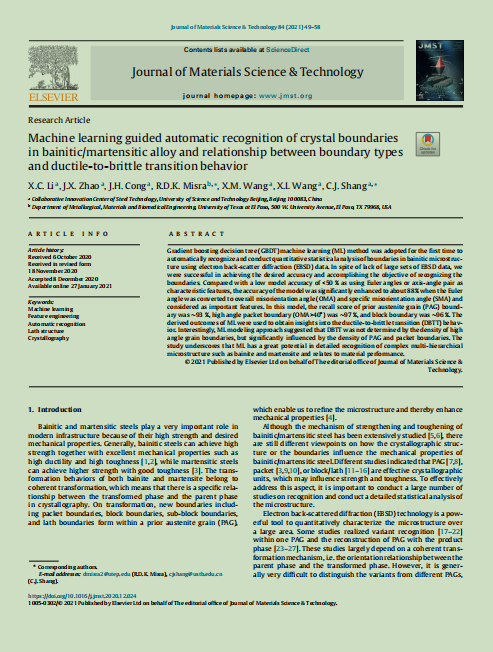Gradient boosting decision tree (GBDT) machine learning (ML) method was adopted for the fifirst time to automatically recognize and conduct quantitative statistical analysis of boundaries in bainitic microstructure using electron back-scatter diffraction (EBSD) data. In spite of lack of large sets of EBSD data, we
were successful in achieving the desired accuracy and accomplishing the objective of recognizing the boundaries. Compared with a low model accuracy of <50 % as using Euler angles or axis-angle pair as characteristic features,the accuracy ofthe model was signifificantly enhanced to about 88 % when the Euler angle was converted to overall misorientation angle (OMA) and specifific misorientation angle (SMA) and considered as important features. In this model, the recall score of prior austenite grain (PAG) boundary was ∼93 %, high angle packet boundary (OMA>40◦) was ∼97 %, and block boundary was ∼96 %. The derived outcomes of ML were used to obtain insights into the ductile-to-brittle transition (DBTT) behavior. Interestingly, ML modeling approach suggested that DBTT was not determined by the density of high angle grain boundaries, but signifificantly inflfluenced by the density of PAG and packet boundaries. The study underscores that ML has a great potential in detailed recognition of complex multi-hierarchical microstructure such as bainite and martensite and relates to material performance.
